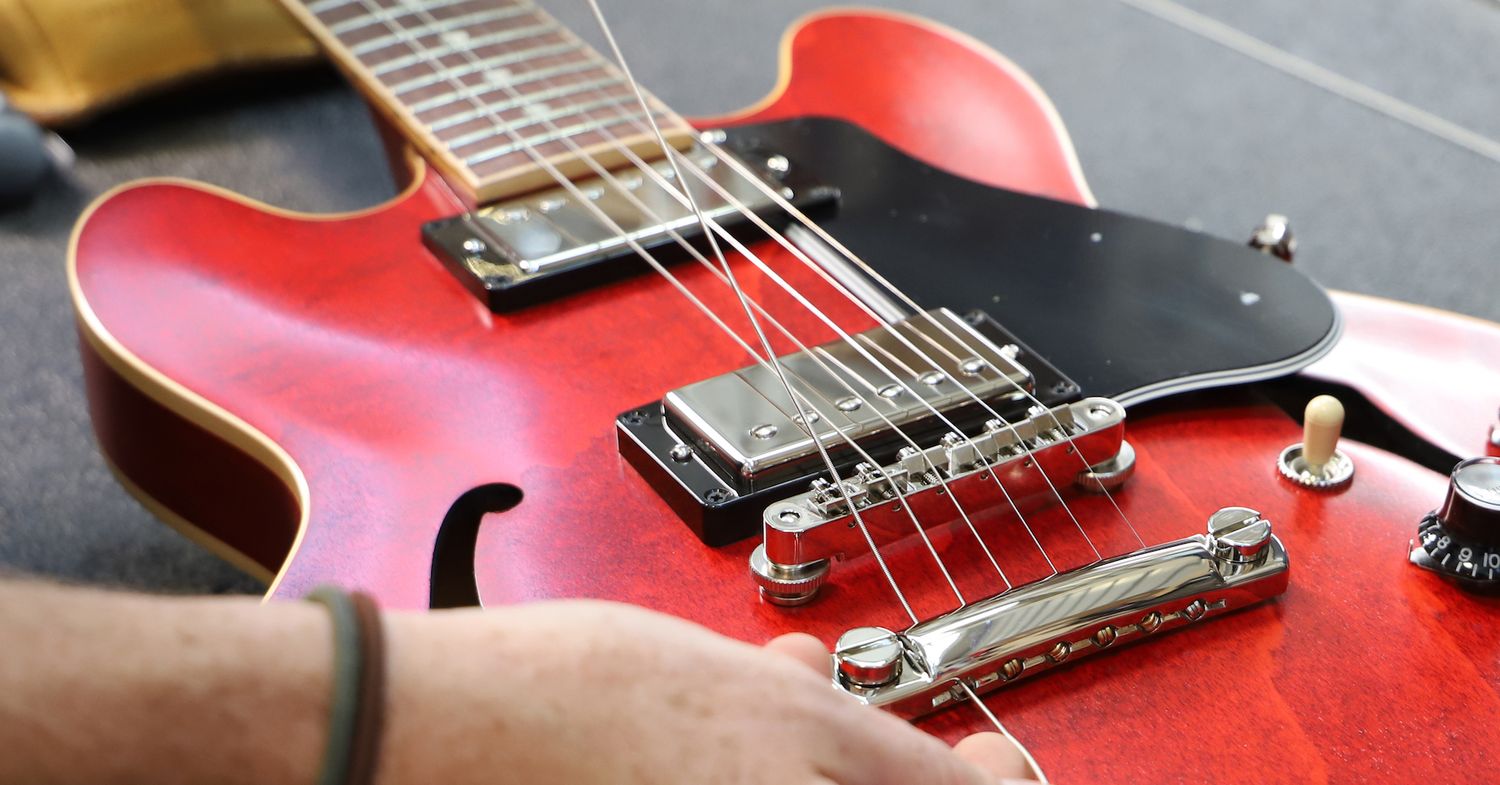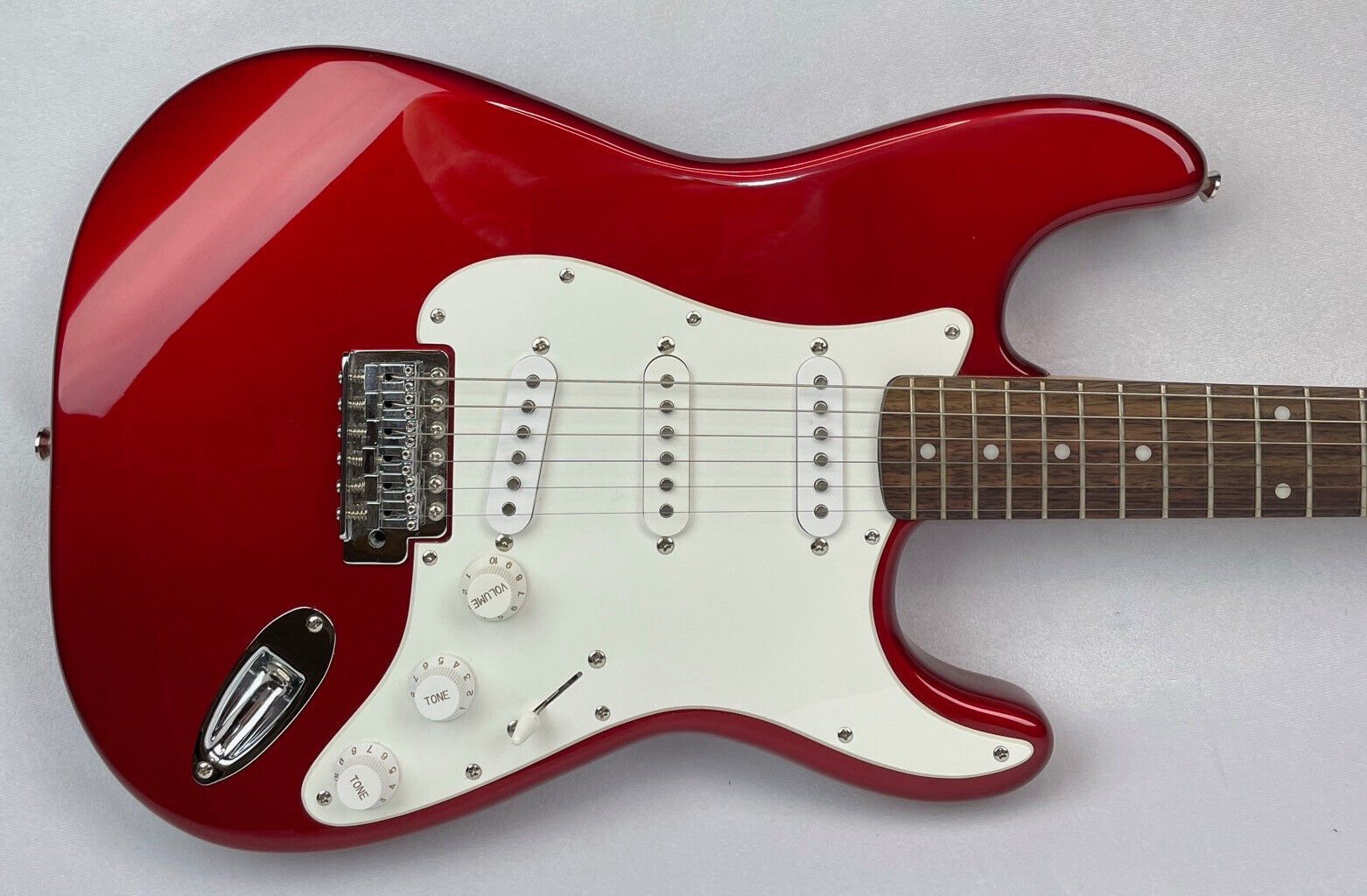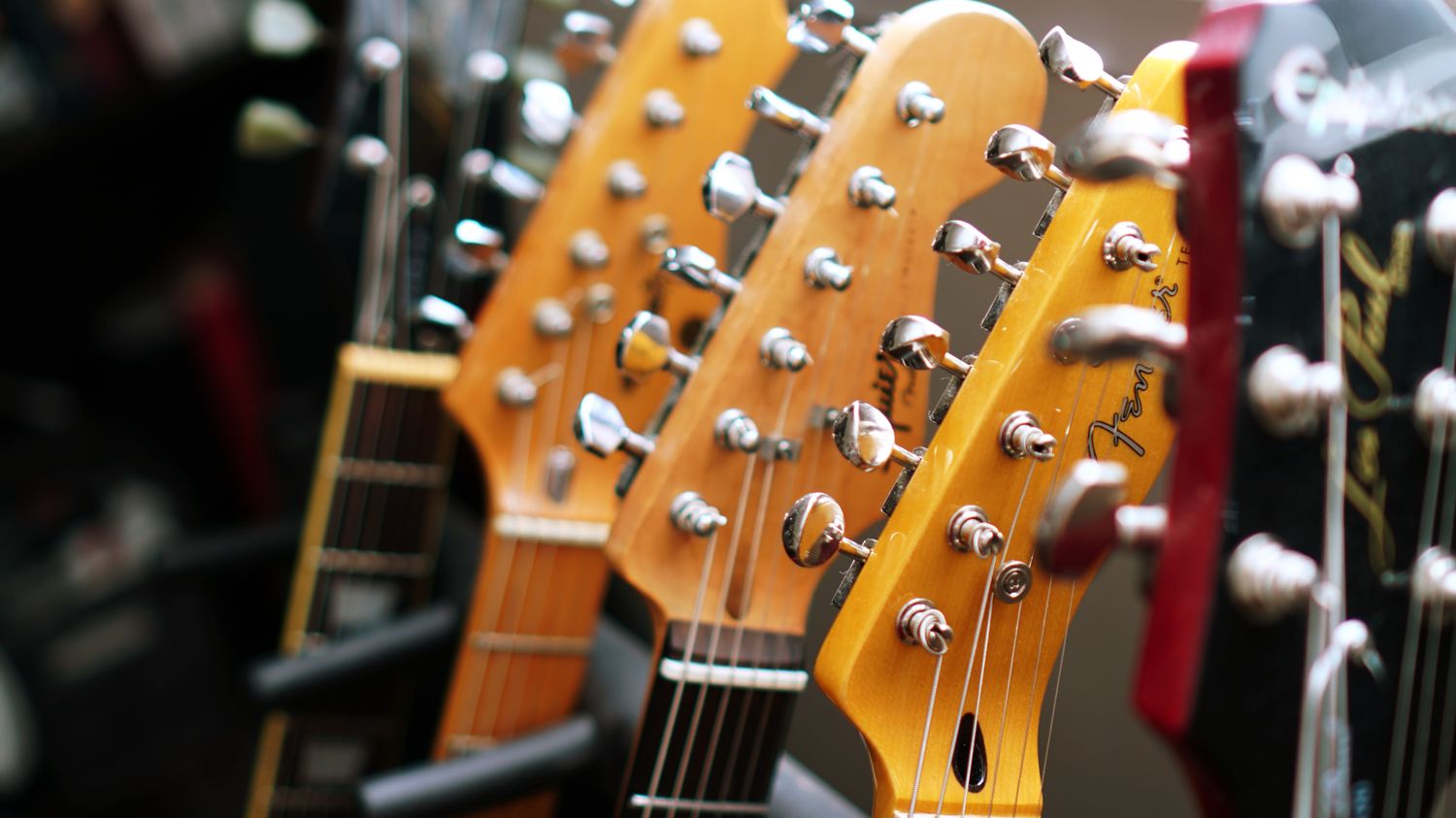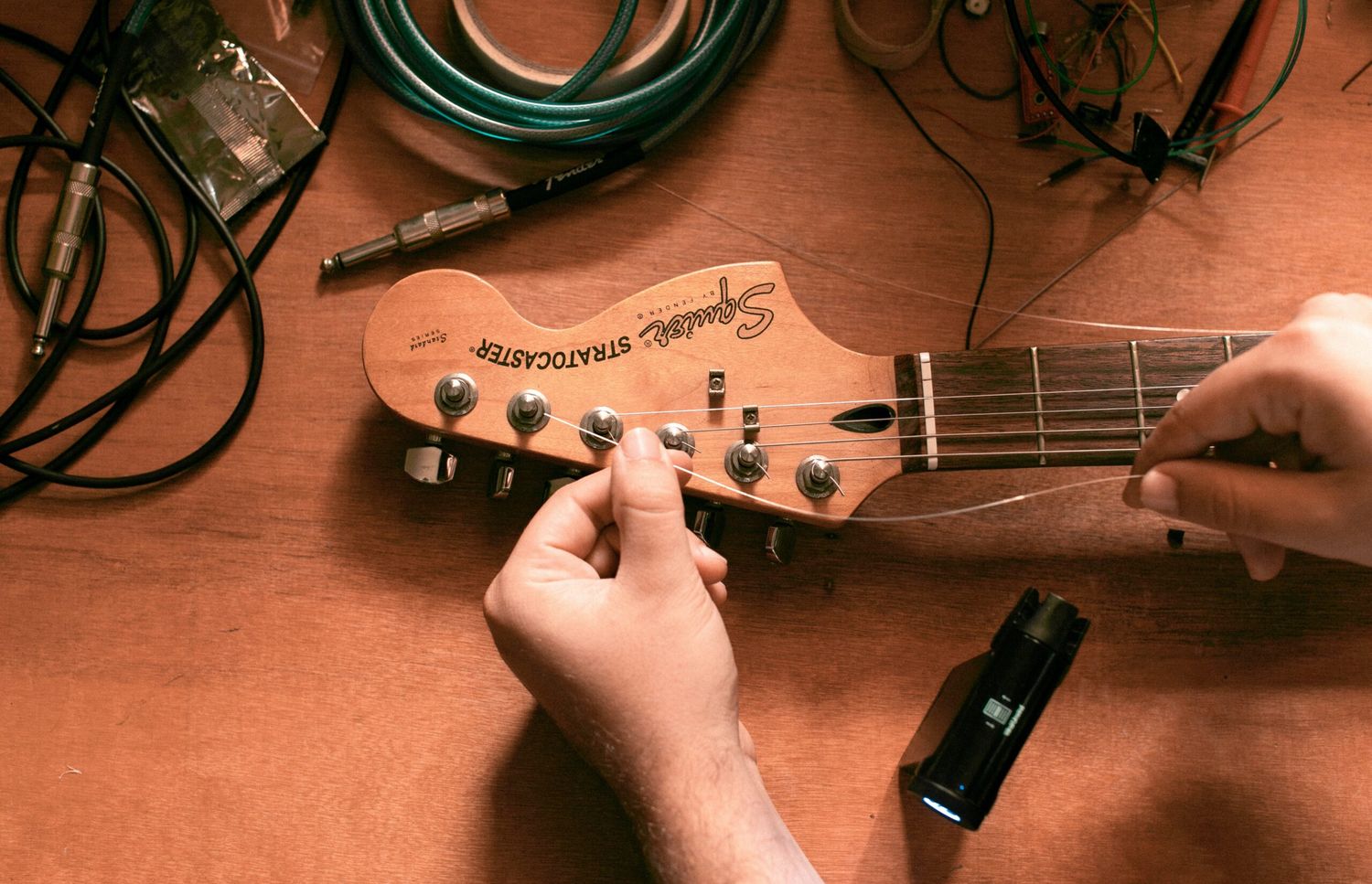Home>Production & Technology>Acoustic>Why Is Acoustic Guitar Harder Than Electric


Acoustic
Why Is Acoustic Guitar Harder Than Electric
Published: March 12, 2024
Discover why playing the acoustic guitar is more challenging than the electric, and learn how to overcome the difficulties. Master the unique techniques and skills required for acoustic guitar playing.
(Many of the links in this article redirect to a specific reviewed product. Your purchase of these products through affiliate links helps to generate commission for AudioLover.com, at no extra cost. Learn more)
Table of Contents
Introduction
When it comes to the world of music, the debate between acoustic and electric guitar has been a long-standing one. Both instruments have their own unique charm and appeal, but for many aspiring musicians, the acoustic guitar presents a particularly daunting challenge. The question often arises: why is acoustic guitar harder than electric?
The acoustic guitar, with its hollow body and natural amplification, demands a different level of skill and technique compared to its electric counterpart. While both instruments share the same basic principles of fretting and strumming, the acoustic guitar requires a more nuanced approach and a greater degree of precision. This is due to a combination of factors, including differences in technique, string tension and action, sound projection, and the physical demands placed on the player.
In this article, we will delve into the intricacies of the acoustic guitar and explore the reasons why many musicians find it more challenging to master than the electric guitar. By understanding these factors, aspiring guitarists can gain valuable insight into the unique demands of the acoustic guitar and develop a deeper appreciation for the instrument's rich and complex nature.
Differences in Technique
Mastering the acoustic guitar involves a distinct set of techniques that differ from those required for the electric guitar. One of the primary disparities lies in the reliance on the guitar's natural resonance for sound projection. Unlike the electric guitar, which relies on amplification to produce sound, the acoustic guitar's tone is directly influenced by the player's touch and technique. This fundamental difference necessitates a heightened level of precision and control when playing the acoustic guitar.
The acoustic guitar demands a more deliberate and nuanced approach to fretting and strumming. Due to its hollow body and acoustic properties, every subtle movement and touch of the strings is amplified, making it crucial for players to develop a refined touch and control over their playing dynamics. Additionally, the lack of electronic effects and distortion means that any imperfections in technique are more readily apparent, requiring players to focus on achieving clean and precise execution of chords and notes.
Furthermore, the acoustic guitar's larger body size and wider neck dimensions present a physical challenge for many players, especially those transitioning from the electric guitar. The wider fretboard requires greater finger strength and dexterity to navigate chords and scales effectively. Additionally, the acoustic guitar's higher string tension demands a more robust fretting hand, as pressing down on the strings to produce clear and resonant notes requires greater force and finger endurance.
In contrast, the electric guitar's lower string tension and slimmer neck facilitate faster and more fluid fretting, allowing for greater agility and speed in executing intricate passages. The reliance on amplification also means that players can rely on the instrument's electronics to enhance their sound, providing a level of forgiveness for minor imperfections in technique.
Overall, the differences in technique between the acoustic and electric guitar underscore the unique challenges posed by the acoustic instrument. Mastering the acoustic guitar requires a heightened level of precision, control, and physical dexterity, making it a more demanding yet ultimately rewarding pursuit for musicians seeking to expand their skills and musical expression.
String Tension and Action
The string tension and action of a guitar play a pivotal role in shaping the playing experience and technical demands placed on the musician. When comparing acoustic and electric guitars, the disparities in string tension and action become readily apparent, significantly impacting the overall feel and playability of the instruments.
Acoustic guitars are renowned for their higher string tension, which refers to the amount of force required to stretch the strings to produce a specific pitch. The inherent design of acoustic guitars, with their hollow bodies and sound chambers, necessitates higher string tension to drive the soundboard and produce ample volume and resonance. This higher tension not only affects the physical effort required to fret and bend the strings but also influences the overall responsiveness and tonal characteristics of the instrument.
In contrast, electric guitars typically feature lower string tension, owing to their solid-body construction and reliance on amplification to produce sound. The reduced string tension contributes to a more effortless fretting experience, allowing for smoother string bends and facilitating faster, more fluid playing. Additionally, the lower string tension contributes to the distinctive feel and playability of electric guitars, enabling players to execute techniques such as vibrato and string bending with greater ease and precision.
The action of a guitar, referring to the distance between the strings and the fretboard, also differs significantly between acoustic and electric instruments. Acoustic guitars often feature higher action, requiring the strings to be set further from the fretboard to prevent buzzing and maintain resonance. While this setup contributes to the acoustic guitar's robust and resonant tone, it also demands greater finger strength and precision from the player to effectively press down on the strings and produce clear, resonant notes.
On the other hand, electric guitars typically feature lower action, allowing for closer string-to-fretboard proximity and facilitating faster, more agile playing. The reduced distance between the strings and fretboard enables players to execute rapid fretting and intricate chord voicings with enhanced ease and precision, contributing to the electric guitar's reputation for versatility and technical agility.
In essence, the disparities in string tension and action between acoustic and electric guitars underscore the distinct physical and technical demands associated with each instrument. The higher string tension and action of acoustic guitars necessitate greater finger strength, precision, and control from the player, while the lower string tension and action of electric guitars offer a more forgiving and agile playing experience. Understanding and adapting to these differences is essential for musicians seeking to navigate the unique challenges and nuances of each instrument, ultimately enriching their musical journey and proficiency.
Sound Projection
Sound projection is a fundamental aspect that sets the acoustic guitar apart from its electric counterpart. Unlike electric guitars, which rely on amplification to produce sound, acoustic guitars generate their sound through the vibration of the strings resonating within the hollow body of the instrument. This natural amplification mechanism gives acoustic guitars their distinctive warm and resonant tone, but it also presents unique challenges in terms of sound projection.
The acoustic guitar's reliance on natural resonance means that the player's technique and touch directly influence the volume and clarity of the sound produced. Achieving optimal sound projection on an acoustic guitar requires a delicate balance of fretting pressure, strumming dynamics, and fingerpicking precision. The player must develop a keen sensitivity to the instrument's response, adjusting their technique to coax the desired volume and tonal nuances from the guitar.
Furthermore, the acoustic guitar's larger body size and sound chamber play a crucial role in sound projection. The size and shape of the guitar's body impact the dispersion and resonance of the sound, requiring players to consider their positioning and playing dynamics to optimize sound projection. Additionally, the acoustic guitar's sound projection is influenced by the type of wood used in its construction, with different tonewoods contributing to varying tonal characteristics and projection qualities.
In contrast, electric guitars, with their solid-body construction and reliance on amplification, offer a more controlled and consistent sound projection. The use of pickups and electronic amplification systems allows electric guitarists to manipulate and shape their sound with precision, independent of the acoustic properties of the instrument. This difference in sound projection dynamics highlights the unique challenges faced by acoustic guitarists in harnessing the natural resonance and projection capabilities of their instruments.
Mastering sound projection on the acoustic guitar requires a deep understanding of the instrument's acoustic properties and a refined approach to playing dynamics. Players must develop a keen ear for nuances in tone and volume, adjusting their technique to maximize the instrument's natural projection capabilities. This emphasis on sound projection adds an additional layer of complexity to the acoustic guitar, contributing to its reputation as a more challenging instrument to master compared to the electric guitar.
In essence, the acoustic guitar's reliance on natural sound projection presents a distinctive set of challenges that demand precision, control, and a nuanced understanding of the instrument's acoustic properties. By honing their ability to manipulate sound projection, acoustic guitarists can unlock the full expressive potential of their instruments, creating rich, resonant tones that captivate audiences and elevate their musical performances.
Finger Strength and Endurance
Finger strength and endurance are paramount for mastering the acoustic guitar, presenting a formidable challenge that sets it apart from the electric guitar. The physical demands placed on the fingers and hands of acoustic guitarists are substantial, requiring a combination of strength, dexterity, and endurance to navigate the instrument's higher string tension and wider neck dimensions.
The acoustic guitar's higher string tension, a defining characteristic of the instrument, necessitates greater finger strength to press down on the strings effectively. This elevated tension contributes to the guitar's robust and resonant tone but also requires players to exert more force when fretting chords and notes. As a result, developing sufficient finger strength is essential for producing clear, resonant tones and executing complex chord voicings on the acoustic guitar.
Moreover, the wider neck dimensions of acoustic guitars demand enhanced finger dexterity and stretching capabilities from the player. Navigating chords and scales across the broader fretboard requires a higher degree of finger independence and flexibility, placing additional emphasis on developing finger strength and agility.
In addition to strength and dexterity, endurance plays a crucial role in mastering the acoustic guitar. Prolonged practice sessions and performances can exert significant strain on the fingers and hands, particularly for novice players. Building endurance is essential for sustaining consistent playing technique and tone quality over extended periods, allowing guitarists to deliver compelling performances without succumbing to fatigue.
Comparatively, the electric guitar, with its lower string tension and slimmer neck profile, imposes less physical strain on the fingers and hands. The reduced effort required to fret notes and chords on an electric guitar allows for more prolonged playing sessions with minimal fatigue, providing a contrasting experience to the physical demands of the acoustic guitar.
To overcome the challenges of finger strength and endurance, aspiring acoustic guitarists must engage in targeted exercises and practice routines aimed at developing finger strength, flexibility, and stamina. These exercises may include finger stretching drills, chord transitions, and repetitive fingerpicking patterns designed to enhance finger strength and endurance over time.
Ultimately, the pursuit of mastery on the acoustic guitar demands a dedicated focus on developing finger strength and endurance, enabling players to unlock the instrument's full expressive potential and deliver captivating performances with unwavering precision and control.
Conclusion
In conclusion, the acoustic guitar presents a formidable yet deeply rewarding challenge for aspiring musicians. The instrument's unique characteristics, including differences in technique, string tension and action, sound projection, and the physical demands placed on the player, contribute to its reputation as a more demanding instrument to master compared to the electric guitar.
The acoustic guitar demands a heightened level of precision and control, requiring players to develop a refined touch and nuanced approach to fretting and strumming. The reliance on natural resonance for sound projection underscores the importance of mastering playing dynamics and technique to coax the desired volume and tonal nuances from the instrument. Additionally, the acoustic guitar's higher string tension and wider neck dimensions necessitate greater finger strength, dexterity, and endurance from the player, adding a physical dimension to the instrument's challenges.
In contrast, the electric guitar offers a more forgiving playing experience, characterized by lower string tension, slimmer neck dimensions, and the ability to manipulate sound through electronic amplification. These differences highlight the unique demands and complexities associated with the acoustic guitar, making it a more formidable yet ultimately enriching instrument to master.
Despite its challenges, the acoustic guitar rewards dedicated players with a rich and resonant sound that captivates audiences and offers a deeply fulfilling musical experience. The instrument's expressive potential, acoustic properties, and timeless appeal make it a cherished companion for musicians seeking to explore the depths of musical expression.
Ultimately, the journey of mastering the acoustic guitar is a testament to the dedication, perseverance, and artistry of musicians who embrace its challenges. By understanding and embracing the nuances of the acoustic guitar, aspiring players can embark on a transformative musical journey, honing their skills, and creating soul-stirring music that resonates deeply with listeners.
In the end, the acoustic guitar's inherent complexities and demands serve as a testament to the instrument's enduring allure and its ability to inspire musicians to reach new heights of creativity and expression.











